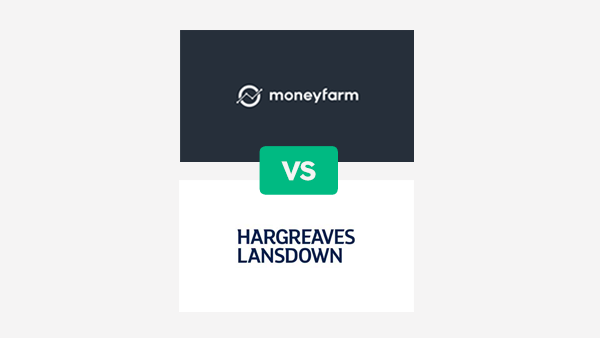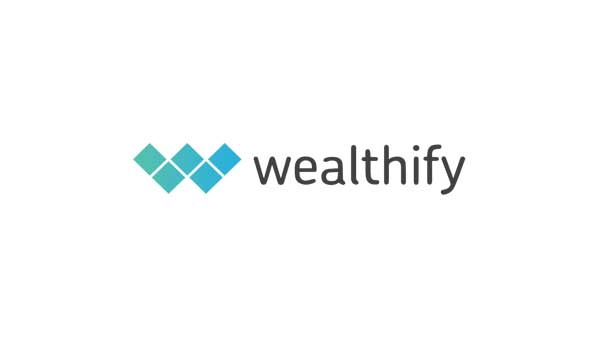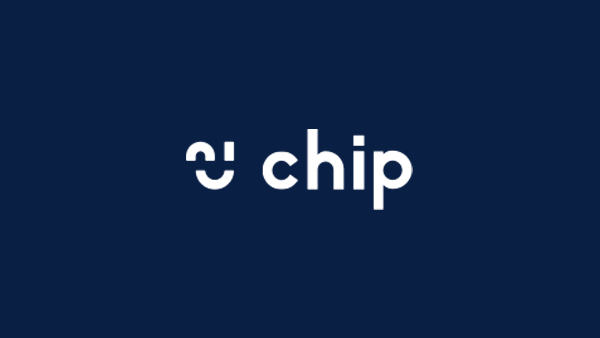Moneyfarm and Hargreaves Lansdown are both part of a thriving investment app market in the UK. Our Moneyfarm vs Hargreaves article compares the two platforms. Moneyfarm is a robo-advisor that gives investors a hands off investing experience. Hargreaves Lansdown allows users to be more active and make their own trades. Let’s take a look at the similarities and differences and the pros and cons of each investment platform.
About Moneyfarm
Moneyfarm is an investment platform that operates as a robo-advisor. They use automated systems that create investment plans for customers. They were founded in Italy in 2011, and launched in the UK in 2016. They are a discretionary investment platform, which means that they do the investing for you.
This is similar to a traditional financial advisor. However, they make the investment decisions, based on the customer’s requirements, with their technology and algorithms. This makes them a robo-advisor.
About Hargreaves Lansdown
A UK investment giant, Hargreaves Lansdown have been trading for over 40 years, and claim 1.6 million customers hold over £120 billion in assets on their platform. As an execution-only platform, they also provide a huge resource of trading and asset information.
Even though Hargreaves Lansdown are mainly an execution-only platform, they have recently added some guided investment plans called HL Ready Made Investments.

Table of Contents
Moneyfarm vs Hargreaves Lansdown – At a Glance
| Moneyfarm | Hargreaves Lansdown | |
| Platform Type | Robo-advisor | Execution Only |
| Minimum Investment | £500 | £1 – Fund and Share account |
| £100 – ISA, SIPP | ||
| £1000 – HL Portfolio + | ||
| Products | General Investment Account | Fund and Share Account |
| Stocks & Shares ISA | Stocks and Shares ISA | |
| Junior ISA | Junior ISA | |
| Pension (SIPP) | Cash ISA | |
| Lifetime ISA | ||
| Active Savings | ||
| Personal Pension (SIPP) | ||
| Platform Fees | Below £10k – 0.75% | Funds: |
| £10k – £19,999 – 0.70% | Up to £250k – 0.45% | |
| £20k – £49,999 – 0.65% | £250k – £1m – 0.25% | |
| £50k – £99,999 – 0.60% | £1m – £2m – 0.10% | |
| £100k – £249,999 – 0.45% | £2m+ – Free | |
| £250k – £499,999 – 0.40% | Shares: | |
| £500k+ – 0.35% | Fund & Share Account – Free | |
| ISA – 0.45% | ||
| SIPP – 0.45% | ||
| Fund Fees | 0.20% | |
| Fund Fees – Ethical | 0.21% | |
| Trading Fees | N/A | From £5.95 to £11.95 per trade |
| Portfolios | 7 Actively Managed | 4 Managed Funds |
| 7 Ethical Actively Managed | Many guide funds in Wealth Shortlist | |
| 5 Fixed Allocation | ||
| 4 Thematic | ||
| Mobile App | Relatively basic | Full trading platform |
| Extra Features | Financial Advisor | Extensive resources |
| FSCS Protected? | Yes | Yes |
At Wiseabout.money we are keen investors. As big fans of trying out new financial technology and platforms, we have put our own money into both of these platforms, and several others like them. We have taken our own experiences into account when looking at the benefits and drawbacks of each platform.
What is a robo-advisor?
Traditional financial advisors invest on behalf of their clients. They find out the clients appetite for risk, type of investments they want to have, and the amount of money they have to invest. They then create an investment plan for them. Robo-advisors operate in exactly the same way, but instead of using investment experts to create the plan, the use algorithms and automated systems to create the plan. This allows them to save on cost as they have less human resource to maintain.
What is an execution-only platform?
An execution-only platform allows customers to make trades themselves using their system, and does not provide financial advice. They only provide the ‘execution’ of the trade.
Which type of platform is right for me?
With investing, you can decide to be an active investor, which means that you decide on which assets to buy and sell, and create your own portfolio. Alternatively, you can be a passive investor, which means that you put your capital into an investment platform that designs your investment strategy for you and makes the trades.
As a robo-advisor, Moneyfarm is passive, and Hargreaves Lansdown, as an execution-only platform, is active (although they have recently introduced their HL Ready Made Investments, which give a passive investment experience).
Moneyfarms vs Hargreaves Lansdown – Fees
Moneyfarm Charges:
Moneyfarm have a simple pricing structure which depends on 3 things:
- Whether you are invested in an actively managed or fixed allocation portfolio
- Whether your investments are socially responsible or classic.
- The amount you have invested with Moneyfarm. The annual percentage cost will reduce the higher you have invested with them.
The pricing is made up of 3 areas:
- Moneyfarm fees
- Underlying fund fees
- Market spread
1. Moneyfarm fees:
The Moneyfarm fees vary based on whether your investment is actively managed or fixed, and how much you have invested with Moneyfarm.
| Fund Types: | Actively Managed | Fixed Allocation |
| Annual % | Annual % | |
| Amount Invested | ||
| £500 – £9,999 | 0.75% | 0.45% |
| £10,000 – £19,999 | 0.70% | 0.45% |
| £20,000 – £49,999 | 0.65% | 0.45% |
| £50,000 – £99,999 | 0.60% | 0.45% |
| £100,000 – £249,999 | 0.45% | 0.35% |
| £250,000 – £500,000 | 0.40% | 0.30% |
| £500,000 + | 0.35% | 0.25% |
With Moneyfarm, once you hit a certain level of investment, then the platform fees are applied across the entire amount.
2. Underlying Fund Fees:
Each fund (usually ETFs) that you invest in with Moneyfarm has a cost, which is added to the annual percentage. Moneyfarm state that the average is 0.2%.
3. Market Spread:
Moneyfarm also factor in the market spread as a percentage cost. This refers to the difference between the buying and selling prices for any investment. This is charged at 0.09% annually.
Total Costs:
Once all of the 3 cost elements are combined, below we show the percentages that are paid on your investment annually:
| Fund Types: | Actively Managed | Fixed Allocation |
| Annual % | Annual % | |
| Amount Invested | ||
| £500 – £9,999 | 1.04% | 0.74% |
| £10,000 – £19,999 | 0.99% | 0.74% |
| £20,000 – £49,999 | 0.94% | 0.74% |
| £50,000 – £99,999 | 0.89% | 0.74% |
| £100,000 – £249,999 | 0.74% | 0.64% |
| £250,000 – £500,000 | 0.69% | 0.59% |
| £500,000 + | 0.64% | 0.54% |
In the table below we show the actual annual amount you will pay dependent on the amount you have invested.
| Fund Types: | Actively Managed | Fixed Allocation |
| Annual £ Cost | Annual £ Cost | |
| Amount Invested | ||
| £500 | £5.20 | £3.70 |
| £10,000 | £99.00 | £74.00 |
| £20,000 | £188.00 | £148.00 |
| £50,000 | £445.00 | £370.00 |
| £100,000 | £740.00 | £640.00 |
| £250,000 | £1,725.00 | £1,475.00 |
| £500,000 | £3,200.00 | £2,700.00 |
Hargreaves Lansdown Fees
Hargreaves Lansdown is a traditional execution-only trading app and their charges are very standard for this type of platform.
The main charges come in two types, and depend on whether you are holding shares or funds in your account.
1. Annual Account Charges:
For holding funds, the charges are:
| Value of Funds | Charge |
| Up to £250,000 | 0.45% |
| Between £250,000 and £1 million | 0.25% |
| Between £1 million and £2 million | 0.1% |
| Over £2 million | Free |
For shares (including ETFs), there is no annual charge for these if you hold them in your Fund & Share account. For other account types:
ISA – 0.45% (capped at £45 per year)
SIPP – 0.45% (capped at £200 per year)
2. Trading Charges:
There are no trading charges for funds. However trading shares (including ETFs and some other types) is charged at:
| Amount of deals in previous months | Charge per deal |
| 0 to 9 | £11.95 |
| 10 to 19 | £8.95 |
| Over 20 | £5.95 |
In addition, if shares from overseas i.e. non UK, are traded, Hargreaves Lansdown will add a foreign exchange charge, which depends on the deal size.
In addition, Hargreaves Lansdown now offer a range of managed funds. The annual percentage fees range from 0.92% to 0.99%.
Summary
The difference here really again comes down to the passive vs active experience. With Hargreaves Lansdown, the annual percentage cost is significantly lower than with Moneyfarm. However, with Moneyfarm that is the only cost, as they do all of the trades for you. With Hargreaves Lansdown, you need to make the trades yourself, and they have a cost for each trade. Which suits you best really comes down to the investment style you prefer.
Moneyfarm vs Hargreaves Lansdown – Minimum Investment
Moneyfarm Minimum Investment:
To invest with Moneyfarm you will need to put in an initial £500. Nutmeg – another robo-advisor platform, also has a minimum investment of £500 (although it is only £100 for Lifetime and Junior ISAs). However, Wealthify, the third of the big robo-advisors in the UK, allows investors to get started with just £1 – so may be more appealing to beginners who want to start small.
Moneyfarm state that they set this minimum level so they are able to diversify the investment portfolio. They say an amount lower than £500 may leave investors exposed to the performance of a single asset, which increases the risk of losses.
Hargreaves Lansdown Minimum Investment:
For the Fund & Share account, it is possible to set up with just £1. However, the minimum investment into a fund is £100. For a stocks and shares ISA, Junior ISA, or a SIPP, the minimum is £100 or £25 per month on direct debit.
Moneyfarm vs Hargreaves Lansdown – Products
Both Moneyfarm have a similar, but not entirely identical, selection of products. In this sense, a product refers the type of account that you use to make your investments in.
These can be a straightforward investment account, which has no tax benefits, or a tax efficient ‘wrapper’ such as an ISA or SIPP.
What is a tax efficient wrapper?
A tax efficient wrapper allows you to ‘wrap’ your investment or savings so that you can pay less or no tax on the amount you have invested. The government are keen for people to save, so have created several of these to help. In the UK, there is an Individual Savings Account, or ISA, which comes in several forms, from a cash ISA, which is based upon savings, and an investment, or stocks and shares ISA, which allows you to invest within an ISA wrapper. All UK residents have an ISA allowance, which is the amount they can pay into their ISA each year. Up to this amount, no tax will be payable on the interest (if a cash ISA) or the dividends or increase in value of the investment, in the case of the stocks and shares ISA.
The ISA allowance for 2023/2024 is £20,000. Individuals can split this allowance between ISAs, for example they could put £5,000 into a cash ISA, and £15,000 into a stocks and shares ISA.
The Self Invested Personal Pension, or SIPP, is a tax efficient wrapper that enables you to save tax efficiently for your retirement.
Products Offered:
Investment Account
Moneyfarm call it a general investment account, whilst Hargreaves Lansdown call theirs a Fund & Share Account. However, they are essentially the same thing – an account to use to invest, that does not have any special tax status.
Moneyfarm and Hargreaves Lansdown both offer the following products:
- Moneyfarm Stocks & Shares ISA
- Hargreaves Lansdown Stocks & Shares ISA
- Moneyfarm Junior ISA
- Hargreaves Lansdown Junior ISA
- Moneyfarm SIPP
- Hargreaves Lansdown SIPP
Savings/Cash ISA/Lifetime ISA:
Moneyfarm only deal with investments – they do not offer any savings products, so therefore, they also do not offer a cash ISA or lifetime ISA, as those are both based on savings.
Hargreaves Lansdown do offer savings products, and they have their Active Savings account, and they also offer a cash ISA and lifetime ISA. They work with a selection of banks to offer a wide range of different interest rates and fixed terms.
Moneyfarm vs Hargreaves Lansdown – Getting Started
With Moneyfarm you initially need to download the app and create an account. Once done, Moneyfarm will ask you a series of questions designed to find out as much as possible about your investment goals, appetite for risk and more. Once these are answered, they will create a portfolio for you.
With Hargreaves Lansdown, you of course need to create an account, and then you can simply choose the type of account or tax wrapper you wish to use, fund your account, and get investing. It makes sense to take advantage of their extensive online investment resources before trading.
Moneyfarm vs Hargreaves Lansdown – Is my money safe?
Any investor needs to understand that any investment carries risk. There is always the potential for your investment to go down in value, and even for you to lose your entire investment – although this is unlikely if you have diversified across a wide range of assets.
Moneyfarm
Moneyfarm are fully regulated by the Financial Conduct Authority (FCA) in the UK, which means that they follow the regulations to protect customer funds. For example, all customer invested funds must be kept completely separate from their company money. Customer funds are also protected under the Financial Services Compensation Scheme (FSCS) up to £85,000 per customer in the event that the company fails.
As a robo-advisor, Moneyfarm make the trades for the customer, and they create an investment plan that will usually diversify the investments to mitigate risk. In addition, when setting up each investment plan, they will ask for the customers attitude to risk so they can make sure that the customer has the level of exposure to potential losses that they want.
Hargreaves Lansdown
Hargreaves Lansdown are also fully regulated by the FCA, and have all of the same protections as Moneyfarm.
One area where there may be more risk is that on the platform customers have to make their own trades, so the diversification is the customer’s responsibility. If the investor is inexperienced then this could lead to issues. However, Hargreaves Lansdown does provide extensive educational resources, and various guides and best buys to help customers navigate their investment journey.
Verdict
As a robo-advisor, Moneyfarm make the investment decisions for the customer, which should mitigate risk, although they can also still be subject to losses. Hargreaves Lansdown allows the user to make their own decisions, but does give guidance. It really depends on your investment preference – whether you want to be active or passive.
Moneyfarm vs Hargreaves Lansdown – Portfolios
Moneyfarm have a wide range of different portfolios in 4 different types:
Actively Managed:
These are the main portfolios offered by Moneyfarm. They have 7 different portfolios, ranging from level 1, which has the least risk, to 7, which is the highest risk. When setting up your investment, they will distribute your funds across these based on your answers to the initial questions when you create your account.
Socially Responsible:
Very similar to the above, but containing ethical investments, these are also based on 7 risk levels, and have a very slightly higher fund cost.
Fixed Allocation:
These funds are not as actively managed, being rebalanced once per year. There are a total of 5 fixed allocation funds.
Thematic Investing:
Finally, Moneyfarm offer thematic funds, which allow investors to focus their investment on particular areas, such as technology, society and sustainability.
The core of the Hargreaves Lansdown product is their trading platform, so it is set up to allow users to do their own trades, and create their own investment portfolios.
However, they do still have portfolios that investors can use – mainly guide portfolios, but also some managed portfolios that were recently launched.
Under the name HL Ready-Made Investments, Hargreaves Lansdown offer 4 different managed portfolios:
- HL Adventurous Managed
- HL Moderately Adventurous Managed
- HL Balanced Managed
- HL Cautious Managed
These funds have annual fees of between 0.9% and 1%, so once the platform fees are added they can be quite expensive.
Hargreaves Lansdown also have a wide range of portfolios in their HL Select and Wealth Shortlist.
Moneyfarm vs Hargreaves Lansdown – Guidance & Education
In some ways it is unfair to compare the 2 platforms in this area, as their focus is very different. As a robo-advisor, Moneyfarm are designed to be a passive investing platform. This means they make the investment decisions for you, and therefore it is not necessary for their customers to acquire knowledge about trading, markets and assets.
They do have some guides and calculators on their site which are useful. However, probably the most attractive feature in this area is that customers can contact a dedicated financial advisor, and even arrange a phone call with one of their team. Whilst this advice may not be as comprehensive as having a dedicated financial advisor who does your investments, it could be a very useful way for investors to get a better insight into their investments. Also – no other robo-advisor competitor to Moneyfarm offer this service.
Hargreaves Lansdown, on the other hand, have spent a great deal of resources creating a knowledge base, designed to help users of their platform understand about all areas of investing. On their site they have calculators, many guides and tutorials, and even a regularly updated news section where you can see all of the latest updates about the world of finance that may affect investments.
This focus on guidance and information makes sense, as Hargreaves Lansdown is focused on investors who do their own trades, so they want to help them as much as they can. Experienced investors would get all of the information they need from the Hargreaves Lansdown website and app, and it could be even more of a valuable resource for a beginner.
It is also possible to get bespoke financial advice from Hargreaves Lansdown – but this is a separate service to their main trading platform, and it is not cheap! The charges are:
Telephone Consultation – £495 (minimum fee)
Face to face Consultation – £1495 (minimum fee)
It is also possible to get an investment plan built by a Hargreaves Lansdown expert. The fees for this are on a percentage basis, and would be charged at an annual fee of 1-2% of the total amount invested.
Moneyfarm vs Hargreaves Lansdown – Performance
Of course any investor wants to know how well an investment has performed historically before putting their money into it. With Hargreaves Lansdown however, they simply give the investor the platform to make their own trades, and they have thousands of assets available to trade. Therefore, everyone’s investment plan is different, so it is not possible to track the performance of the platform as such. They have recently introduced their HL Ready Made Investments, where the investment plans are built by their in-house investment professionals. However, this service launched recently, so they do not yet have any historical performance statistics.
With Moneyfarm it is different, as they have been offering their investment plans for several years, and publish the performance of each of their portfolios on their website.
The below table shows the performance of the 7 Moneyfarm portfolios since 2016. Portfolio 1 is the lowest risk, and the risk level increases up to portfolio 7, which has the highest risk. Always note than past performance is not an indicator of future performance.
| Moneyfarm | Competitor Equivalent Portfolio | |||
| Portfolio | Total Return | Annual Return | Total Return | Annual Return |
| 1 | -2.0% | -0.3% | 8.3% | 1.1% |
| 2 | 11.6% | 1.5% | 16.6% | 2.2% |
| 3 | 28.5% | 3.6% | 16.6% | 2.2% |
| 4 | 36.8% | 4.5% | 27.8% | 3.5% |
| 5 | 44.7% | 5.3% | 40.6% | 4.9% |
| 6 | 55.5% | 6.4% | 40.6% | 4.9% |
| 7 | 72.3% | 7.9% | 51.6% | 6.0% |
Moneyfarm vs Hargreaves Lansdown – Best for beginner investors
At first glance, it may seem obvious that Moneyfarm is the best choice for a beginner investor. As a robo-advisor, they make the investment decisions for you, based on your requirements. For a beginner investor who wants to just invest and then leave it, this can be an attractive way to proceed.
However, if an investor is at the start of their investment journey, and wants to learn about the various elements of investing, so they can become knowledgeable enough to move on to make their own trades, then Moneyfarm may not be the best way to acquire this knowledge, as they will not be getting involved with the research involved with deciding which assets to buy and to include in your investment portfolio.
With Hargreaves Lansdown, the investor has a large resource of guides and information, and can actually get into buying and selling assets. By doing this, it could be argued that a beginner can get to grips with the world of investing quicker.
In addition, Hargreaves Lansdown have recently introduced their HL Ready Made Investments, which are portfolios designed by their investment team, so a beginner using Hargreaves Lansdown could potentially use those, plus also make some trades of their own, getting the best of both worlds.
Overall, both platforms have benefits that can ease a beginner investor into their investment journey.
Moneyfarm vs Hargreaves Lansdown – Mobile App
The Moneyfarm app is far less comprehensive than the Hargreaves Lansdown app, which makes sense, as with Moneyfarm you cannot actively trade, so their app is mainly so you can keep track of your investments
The Hargreaves Lansdown app however, is a fully fledged trading app, from which you can do all of your trading.
Moneyfarm vs Hargreaves Lansdown – FAQ
Which is better Nutmeg or Moneyfarm?
Nutmeg are the biggest UK robo-advisor, but Moneyfarm are also growing fast. They have similar products, with some key differences
Can I trust Moneyfarm?
Moneyfarm are a fully regulated UK investment company, with protection under the FSCS, so they are as trustworthy as any other UK investment platform.
Who is better than Hargreaves Lansdown?
There are many different investment platforms in the UK, and they all have strengths and weaknesses. Check out our Best Investment Apps UK article.
What happens if Moneyfarm goes bust?
Moneyfarm do appear to be a stable and successful company, so it is unlikely they will go bust. However in the case that they do, any investment up to £85,000 is covered under the FSCS.
What happens if Hargreaves Lansdown goes bust?
As with Moneyfarm, customer deposits are protected under the FSCS. Hargreaves Lansdown are one of the biggest investment platforms in the UK and have been operating for over 40 years, so it is seen as a safe paid of hands when it comes to investments.
Moneyfarm vs Hargreaves Lansdown – Pros and Cons
Moneyfarm Pros:
- ‘Set up and forget’ – passive investing style that is incredibly easy to manage.
- Choice of many risk level portfolios to suit each investor’s appetite.
- Sliding scale of platform costs – pay less the more you invest.
- Moneyfarm’s performance is impressive when measured against competitors (although no guarantee of future performance)
Moneyfarm Cons:
- Purely passive investing – no option to do your own trades.
- No option for savings, which means no cash ISA
- Mobile app is limited in functionality.
- Minimum investment is high at £500.
Hargreaves Lansdown Pros:
- Huge amount of assets available to invest – including over 3000 funds.
- Active savings allows you to access many different savings providers and manage a cash ISA.
- Very extensive investment resources, from guides to calculators, news and more.
- Fully fledged investing app.
- Low minimum investment.
- Introduction of managed funds allows investors to have both active and passive investments within the same platform.
Hargreaves Lansdown Cons:
- Trading fees are high compared to several competitors.
- Managed portfolios more expensive than Moneyfarm.
Moneyfarm vs Hargreaves Lansdown – Final Thoughts
Moneyfarm and Hargreaves Lansdown are both high quality and effective investment platforms with the full range of protections that any investment app should have. When deciding which one is for you, it really comes down to whether you want to be active i.e. decide on your own investments and make the trades – in which case Hargreaves Lansdown is for you. If you prefer to be passive i.e. the trades are made for you, then Moneyfarm could be the best choice. However, now that Hargreaves Lansdown have entered the world of managed investment plans with their HL Ready To Invest plans, then it is possible that investors can have a foot in both worlds – passive, managed investing, and the possibility to make their own trades too – an option that Moneyfarm do not offer.
Articles on the wiseabout.money website may contain affiliate links. If you click these links, we may receive compensation. This has no impact on our editorial and any money earned helps us to continue to provide the useful information on our site.









